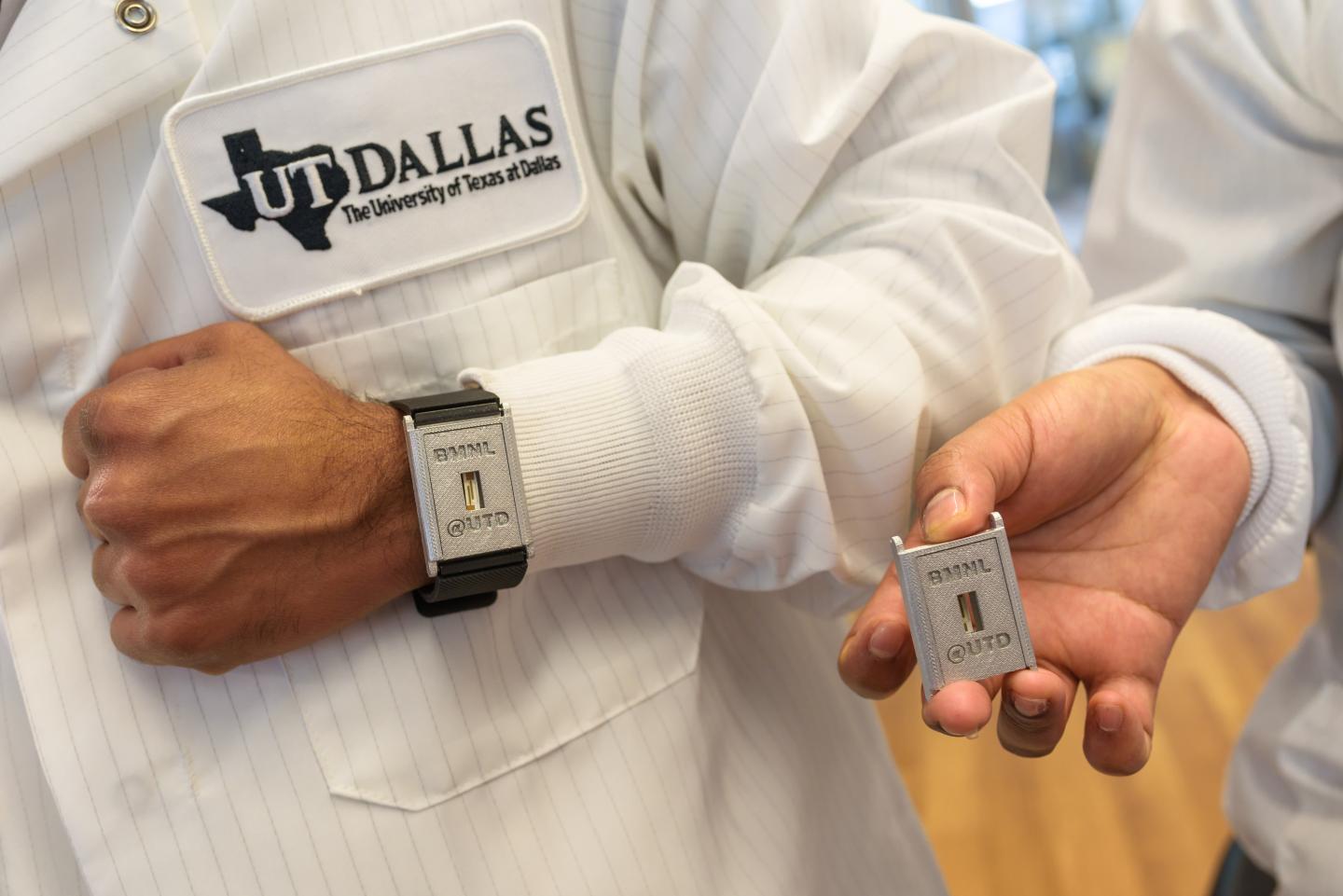The researchers, from the University of Texas at Dallas, are working on devices that will help to manage and regulate type II diabetes, a growing problem not only in the US and UK but increasingly in India. Their wearable biosensor can take measurements every hour for up to a week, giving users and clinicians valuable feedback on whether measures they are taking to manage their condition are effective.

Diabetes monitoring through measuring glucose levels in small blood samples is well-established, but is painful and awkward, and for many Type II diabetics who do not use insulin it is not always useful because they do not have a ready method for rapidly reducing blood sugar. The Dallas team has developed a sensor that measures not only glucose in sweat, but two additional biomarkers: cortisol and interleukin-6.
"If a person has chronic stress, their cortisol levels increase, and their resulting insulin resistance will gradually drive their glucose levels out of the normal range," said Shalini Prasad, a professor of bioengineering who led the research. "At that point, one could become pre-diabetic, which can progress to type 2 diabetes, and so on. If that happens, your body is under a state of inflammation, and this inflammatory marker, interleukin-6, will indicate that your organs are starting to be affected."
Prasad and her team proved last year that they can measure glucose and cortisol in sweat, and have since then been working on a device they can obtain useful readings from only very small amounts of the body fluid. They explain in a paper in Nature Scientific Reports that a key factor was the use of a room temperature ionic liquid — a gel that stabilises the microenvironment on the surface of the skin. This serves two functions: it helps the monitor to maintain a good interface with different skin types from smooth young skin to rougher older skin types, and also allows a weeks'-worth of hourly readings to be taken without degradation of device performance.
The device needs only 1-3µL of sweat — ambient levels on the skin surface — to produce meaningful results, and Prasad envisages incorporating a transceiver into the device so it can send data to a smart phone app.
“You'll simply push a button to request information from the device," she said. "If you measure levels every hour on the hour for a full week, that provides 168 hours' worth of data on your health as it changes. People can take more control and improve their own self-care. A user could learn which unhealthy decisions are more forgiven by their body than others."
The team has emphasised the use of techniques to keep the cost of the device as low as possible, so that it can reach as many people as possible.
"Our cost of manufacturing will be comparable to what it currently takes to make single-use glucose test strips - as little as 10 to 15 cents,” Prasad said. “It needs to reach people beyond America and Europe - and even within first-world nations, we see the link between diabetes and wealth. It can't simply be a small percentage of people who can afford this."




April 1886: the Brunkebergs tunnel
First ever example of a ground source heat pump?